Zombies Are Us: The Walking Dead in the American Police State
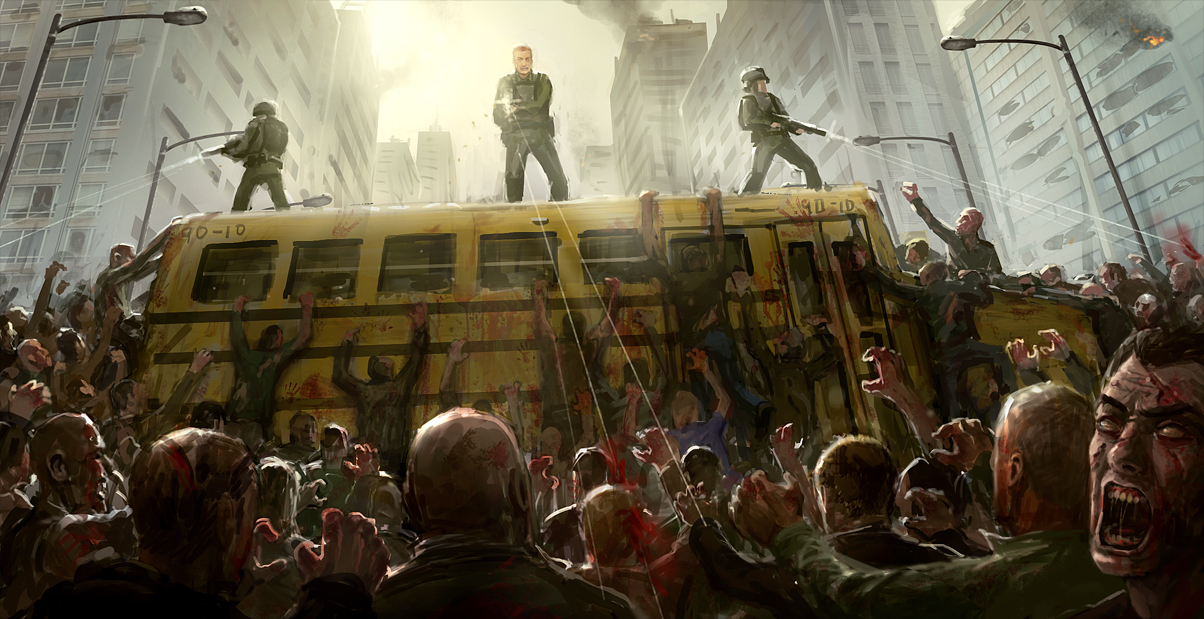 By John W. Whitehead
By John W. Whitehead
October 28, 2014
Fear is a primitive impulse, brainless as hunger, and because the aim of horror fiction is the production of the deepest kinds of fears, the genre tends to reinforce some remarkably uncivilized ideas about self-protection. In the current crop of zombie stories, the prevailing value for the beleaguered survivors is a sort of siege mentality, a vigilance so constant and unremitting that it’s indistinguishable from the purest paranoia.— Terrence Rafferty, New York Times
Fear and paranoia have become hallmarks of the modern American experience, impacting how we as a nation view the world around us, how we as citizens view each other, and most of all how our government views us.
Nowhere is this epidemic of fear and paranoia more aptly mirrored than in the culture’s fascination with zombies, exacerbated by the hit television series The Walking Dead, in which a small group of Americans attempt to survive in a zombie-ridden, post-apocalyptic world where they’re not only fighting off flesh-eating ghouls but cannibalistic humans.
Zombies have experienced such a surge in popularity in recent years that you don’t have to look very far anymore to find them lurking around every corner: wreaking havoc in movie blockbusters such as World War Z, running for their lives in 5K charity races, battling corsets in Pride and Prejudice and Zombies, and even putting government agents through their paces in mock military drills arranged by the Dept. of Defense (DOD) and the Center for Disease Control (CDC).
We’ve been so hounded in recent years with dire warnings about terrorist attacks, Ebola pandemics, economic collapse, environmental disasters, and militarized police, it’s no wonder millions of Americans have turned to zombie fiction as a means of escapism and a way to “envision how we and our own would thrive if everything went to hell and we lost all our societal supports.” As Time magazine reporter James Poniewozik phrases it, the “apocalyptic drama lets us face the end of the world once a week and live.”
Writing for the New York Times, Terrence Rafferty notes:
In the case of zombie fiction, you have to wonder whether our 21st-century fascination with these hungry hordes has something to do with a general anxiety, particularly in the West, about the planet’s dwindling resources: a sense that there are too many people out there, with too many urgent needs, and that eventually these encroaching masses, dimly understood but somehow ominous in their collective appetites, will simply consume us. At this awful, pinched moment of history we look into the future and see a tsunami of want bearing down on us, darkening the sky. The zombie is clearly the right monster for this glum mood, but it’s a little disturbing to think that these nonhuman creatures, with their slack, gaping maws, might be serving as metaphors for actual people—undocumented immigrants, say, or the entire populations of developing nations—whose only offense, in most cases, is that their mouths and bellies demand to be filled.
Here’s the curious thing: while zombies may be the personification of our darkest fears, they embody the government’s paranoia about the citizenry as potential threats that need to be monitored, tracked, surveilled, sequestered, deterred, vanquished and rendered impotent. Why else would the government feel the need to monitor our communications, track our movements, criminalize our every action, treat us like suspects, and strip us of any means of defense while equipping its own personnel with an amazing arsenal of weapons?
For years now, the government has been carrying out military training drills with zombies as the enemy. In 2011, the DOD created a 31-page instruction manual for how to protect America from a terrorist attack carried out by zombie forces. In 2012, the CDC released a guide for surviving a zombie plague. That was followed by training drills for members of the military, police officers and first responders. As journalist Andrea Peyser reports:
Coinciding with Halloween 2012, a five-day national conference was put on by the HALO Corp. in San Diego for more than 1,000 first responders, military personnel and law enforcement types. It included workshops produced by a Hollywood-affiliated firm in…overcoming a zombie invasion. Actors were made up to look like flesh-chomping monsters. The Department of Homeland Security even paid the $1,000 entry fees for an unknown number of participants…
“Zombie disaster” drills were held in October 2012 and ’13 at California’s Sutter Roseville Medical Center. The exercises allowed medical center staff “to test response to a deadly infectious disease, a mass-casualty event, terrorism event and security procedures”…
[In October 2014], REI outdoor-gear stores in Soho and around the country are to hold free classes in zombie preparedness, which the stores have been providing for about three years.
The zombie exercises appear to be kitschy and fun—government agents running around trying to put down a zombie rebellion—but what if the zombies in the exercises are us, the citizenry, viewed by those in power as mindless, voracious, zombie hordes?
Consider this: the government started playing around with the idea of using zombies as stand-ins for enemy combatants in its training drills right around the time the Army War College issued its 2008 report, warning that an economic crisis in the U.S. could lead to massive civil unrest that would require the military to intervene and restore order.
That same year, it was revealed that the government had amassed more than 8 million names of Americans considered a threat to national security, to be used “by the military in the event of a national catastrophe, a suspension of the Constitution or the imposition of martial law.” The program’s name, Main Core, refers to the fact that it contains “copies of the ‘main core’ or essence of each item of intelligence information on Americans produced by the FBI and the other agencies of the U.S. intelligence community.”
Also in 2008, the Pentagon launched the Minerva Initiative, a $75 million military-driven research project focused on studying social behavior in order to determine how best to cope with mass civil disobedience or uprisings. The Minerva Initiative has funded projects such as “Who Does Not Become a Terrorist, and Why?” which “conflates peaceful activists with ‘supporters of political violence’ who are different from terrorists only in that they do not embark on ‘armed militancy’ themselves.”
In 2009, the Dept. of Homeland Security issued its reports on Rightwing and Leftwing Extremism, in which the terms “extremist” and “terrorist” were used interchangeably to describe citizens who were disgruntled or anti-government. Meanwhile, a government campaign was underway to spy on Americans’ mail, email and cell phone communications. Recent reports indicate that the U.S. Postal Service has handled more than 150,000 requests by federal and state law enforcement agencies to monitor Americans’ mail, in addition to photographing every piece of mail sent through the postal system.
Noticing a pattern yet? “We the people” or, more appropriately, “we the zombies” are the enemy.
So when presented with the Defense Department’s battle plan for defeating an army of the walking dead, you might find yourself giggling over the fact that a taxpayer-funded government bureaucrat actually took the time to research and write about vegetarian zombies, evil magic zombies, chicken zombies, space zombies, bio-engineered weaponized zombies, radiation zombies, symbiant-induced zombies, and pathogenic zombies.
However, I would suggest that you take at face value the DOD’s strategy, outlined in “CONOP 8888,” recognizing that in an age of extreme government paranoia, what you’re really perusing is a training manual for the government in how to put down a citizen uprising or at least an uprising of individuals “infected” with dangerous ideas about freedom. Military strategists seized upon the zombie ruse as a way to avoid upsetting the public should the “fictional training scenario” be mistaken for a real plan. Of course, the tactics and difficulties involved are all too real, beginning with martial law.
As the DOD training manual states: “zombies [read: “activists”] are horribly dangerous to all human life and zombie infections have the potential to seriously undermine national security and economic activities that sustain our way of life. Therefore having a population that is not composed of zombies or at risk from their malign influence is vital to U.S. and Allied national interests.”
So how does the military plan to put down a zombie (a.k.a. disgruntled citizen) uprising?
The strategy manual outlines five phases necessary for a counter-offensive: shape, deter, seize initiative, dominate, stabilize and restore civil authority. Here are a few details:
Phase 0 (Shape): Conduct general zombie awareness training. Monitor increased threats (i.e., surveillance). Carry out military drills. Synchronize contingency plans between federal and state agencies. Anticipate and prepare for a breakdown in law and order.
Phase 1 (Deter): Recognize that zombies cannot be deterred or reasoned with. Carry out training drills to discourage other countries from developing or deploying attack zombies and publicly reinforce the government’s ability to combat a zombie threat. Initiate intelligence sharing between federal and state agencies. Assist the Dept. of Homeland Security in identifying or discouraging immigrants from areas where zombie-related diseases originate.
Phase 2 (Seize initiative): Recall all military personal to their duty stations. Fortify all military outposts. Deploy air and ground forces for at least 35 days. Carry out confidence-building measures with nuclear-armed peers such as Russia and China to ensure they do not misinterpret the government’s zombie countermeasures as preparations for war. Establish quarantine zones. Distribute explosion-resistant protective equipment. Place the military on red alert. Begin limited scale military operations to combat zombie threats. Carry out combat operations against zombie populations within the United States that were “previously” U.S. citizens.
Phase 3 (Dominate): Lock down all military bases for 30 days. Shelter all essential government personnel for at least 40 days. Equip all government agents with military protective gear. Issue orders for military to kill all non-human life on sight. Initiate bomber and missile strikes against targeted sources of zombie infection, including the infrastructure. Burn all zombie corpses. Deploy military to lock down the beaches and waterways.
Phase 4 (Stabilize): Send out recon teams to check for remaining threats and survey the status of basic services (water, power, sewage infrastructure, air, and lines of communication). Execute a counter-zombie ISR plan to ID holdout pockets of zombie resistance. Use all military resources to target any remaining regions of zombie holdouts and influence. Continue all actions from the Dominate phase.
Phase 5 (Restore civil authority): Deploy military personnel to assist any surviving civil authorities in disaster zones. Reconstitute combat capabilities at various military bases. Prepare to redeploy military forces to attack surviving zombie holdouts. Restore basic services in disaster areas.
Notice the similarities? Surveillance. Military drills. Awareness training. Militarized police forces. Martial law. What’s amazing is that the government is not being covert about any of this. As I point out in my book, A Government of Wolves: The Emerging American Police State, it’s all out in the open, for all to see, read and learn from.
If there is any lesson to be learned, it is simply this: whether the threat to national security comes in the form of actual terrorists, imaginary zombies or disgruntled American citizens infected with dangerous ideas about freedom, the government’s response to such threats remains the same: detect, deter and annihilate.
It’s time to wake up, America, before you end up with a bullet to the head—the only proven means of killing a zombie.
Chicago Drivers Have Wised Up to Speed Cameras, Their Good Behavior is Bankrupting the City
Citizens in Chicago are costing the city tens of millions by obeying the law, giving credence to the notion that crime really does pay, and is not only profitable but necessary for the state to survive.
Over the last year Rahm Emanuel and company have flooded the city with speed cameras in an attempt to create a windfall of revenue generation.
Original estimates of revenue to be collected were upwards of $100 million but good drivers set back this greedy political goal $50 million. This shortage is in spite of the city’s best efforts to trick drivers into getting the tickets by placing the cameras in the proximity to schools and parks.
The tickets come with a $100 sticker price and the residents of Chicago got wise to this scam real quick.
Good behavior is bad for the budget.
Now the city will have to rob the citizens of Chicago in other ways to make up for their $50 million dollar budget shortfall.
This is a perfect example of how the system never sets out to prevent crime, they only wish to control it for profit.
A report done by Chicago Inspector General Joe Ferguson, maintained “the City cannot prove red-light camera locations are based on safety considerations.” In fact, there are a very many studies which illustrate the negative safety impact of speed cameras, they are listed at the bottom of this article.
This is a swift kick in the pants of Mayor Rahm Emanuel as it has taught him that underestimating the intelligence of the Chicago citizens can have dire consequences.
It also helps to shed light on potential revolutionary measures which ‘we the people’ can take to incite incredible change. The state is dependent upon you breaking their arbitrary traffic ‘laws’ in order to pay themselves. If we stop speeding, we literally give them a drastic pay cut.
Imagine it, we could defund the police state through good driving! In theory anyway.
Even if the good driving revolution never gets off the ground, it is quite heartening to see the huge effect that it is having in Chicago. Hopefully it opens the eyes of people across the country to the fact that the state needs them to break its laws in order to survive.
Starve the system. Drive the speed limit.
U.S. PIRG Red Light Camera Report – Caution: Red Light Cameras Ahead
According to a this study by the national public interest advocacy group, U.S. PRIG, local governments hungry for revenue are signing contracts with red-light camera companies that put profit over traffic safety.
Los Angeles Red Light Cameras Lead To Increased Accidents
A local TV station fact-checked the city’s claims that their ticket cameras reduced accidents and found that the opposite was true. At 20 of the 32 intersections studied, accidents increased and several intersections tripled their accident rate.
Virginia Accidents Increased After Ticket Camera Installation
The Virginia Transportation Research Council released a report expanding upon earlier research into the safety effects of red light cameras in Virginia. It showed an overall increase in crashes after cameras were installed.
A Long Term Study of Red-Light Cameras and Accidents
The conclusion of this Australian study was that RLCs are not an effective countermeasure and that they can increase the number of rear end crashes.
AAA Michigan Study Shows Cameras Aren’t Needed
AAA Michigan partnered with a number of communities to improve intersection safety. Their inexpensive structural changes resulted in a 47-percent decrease in crashes and a 50-percent decrease in injuries.
Red Light Running Cameras: Would Crashes, Injuries and Automobile Insurance Rates Increase If They Are Used in Florida?
A report published in Florida Public Health Review journal found that red light cameras increased accidents and insurance industry profit.
Red-Light-Running Behaviour at Red-Light Camera and Control Intersections
Monash University study showing red-light cameras have no effect on reducing violations.
A Detailed Investigation Of Crash Risk Reduction Resulting From Red-Light Cameras In Small Urban Areas
A study prepared by the North Carolina A&T State University found that red-light cameras increased the number of accidents at intersections.
A Response to Unfounded Criticisms of Burkey and Obeng (2004) Made by the IIHS
The North Carolina A&T University study above was criticized by the Insurance Institute for Highway Safety (IIHS). This is a rebuttal of IIHS’s claims by the authors of the North Carolina study.
Impact of Red-Light Camera Enforcement on Crash Experience — A Synthesis of Highway Practice
A recent study by the Transportation Research Board (TRB) illustrates the lack of evidence supporting the effectiveness of red-light cameras.
Evaluation of the Red-Light-Camera-Enforcement Pilot Project
This report from Ontario, Canada’s Ministry of Transportation’s concluded that jurisdictions using photo enforcement experienced an overall increase in property damage and fatal and injury rear-end collisions.
Development of Guidelines for Identifying and Treating Locations with a Red-Light-Running Problem
This Texas Transportation Institute study highlights the efficacy of increasing yellow-light times. An extra second yielded a 40-percent reduction in collisions.
Virginia DOT Study on Red-Light Cameras
The Virginia Department of Transportation released a biased report in favor of the cameras that still documented an increase in accidents, including more rear-end collisions and injuries.
Critique of IIHS 2001 Oxnard Study
California Senate Committee on Privacy critiqued the Oxnard study. The results show that IIHS’s study is flawed on many levels.
The Red-Light-Running Crisis: Is It Intentional?
This report was prepared by former House Majority Leader Dick Armey’s staff. It looks at the problems of red-light cameras and how to really deal with traffic-light violations.
Driver Behavior Characteristics at Urban Signalized Intersections
This study shows that providing adequate all-red clearance intervals can significantly impact intersection safety by reducing the probability of occurrence of right angle crashes, even if drivers run the red light.
Misleading San Diego Report
Although the report clearly credits the most significant reduction in violations to an increase in yellow time — a fact buried on page 78 — the report nonetheless credits these benefits to the red-light cameras everywhere else in the report, especially in the summary.
University of South Florida Criticism of Oxnard Study
University of South Florida researchers uncovered fundamental flaws in the first US study to claim red light cameras decrease accidents.
Report Critiques Red Light Camera Research Methods
A peer-reviewed article published in the Florida Public Health Review elaborates on the conclusion that red light cameras are associated with increased injury accidents.
WHEN EUROPEANS WERE SLAVES: Research Suggests White Slavery Was Much More Common Than Previously Believed
A new study suggests that a million or more European Christians were enslaved by Muslims in North Africa between 1530 and 1780 – a far greater number than had ever been estimated before.
In a new book, Robert Davis, professor of history at Ohio State University, developed a unique methodology to calculate the number of white Christians who were enslaved along Africa’s Barbary Coast, arriving at much higher slave population estimates than any previous studies had found.
Most other accounts of slavery along the Barbary coast didn’t try to estimate the number of slaves, or only looked at the number of slaves in particular cities, Davis said. Most previously estimated slave counts have thus tended to be in the thousands, or at most in the tens of thousands. Davis, by contrast, has calculated that between 1 million and 1.25 million European Christians were captured and forced to work in North Africa from the 16th to 18th centuries.
Davis’s new estimates appear in the book Christian Slaves, Muslim Masters: White Slavery in the Mediterranean, the Barbary Coast, and Italy, 1500-1800 (Palgrave Macmillan).
“Much of what has been written gives the impression that there were not many slaves and minimizes the impact that slavery had on Europe,”
Davis said it is useful to compare this Mediterranean slavery to the Atlantic slave trade that brought black Africans to the Americas. Over the course of four centuries, the Atlantic slave trade was much larger – about 10 to 12 million black Africans were brought to the Americas. But from 1500 to 1650, when trans-Atlantic slaving was still in its infancy, more white Christian slaves were probably taken to Barbary than black African slaves to the Americas, according to Davis.
“One of the things that both the public and many scholars have tended to take as given is that slavery was always racial in nature – that only blacks have been slaves. But that is not true,” Davis said. “We cannot think of slavery as something that only white people did to black people.”
During the time period Davis studied, it was religion and ethnicity, as much as race, that determined who became slaves.
“Enslavement was a very real possibility for anyone who traveled in the Mediterranean, or who lived along the shores in places like Italy, France, Spain and Portugal, and even as far north as England and Iceland,” he said.
Pirates (called corsairs) from cities along the Barbary Coast in north Africa – cities such as Tunis and Algiers – would raid ships in the Mediterranean and Atlantic, as well as seaside villages to capture men, women and children. The impact of these attacks were devastating – France, England, and Spain each lost thousands of ships, and long stretches of the Spanish and Italian coasts were almost completely abandoned by their inhabitants. At its peak, the destruction and depopulation of some areas probably exceeded what European slavers would later inflict on the African interior.
Although hundreds of thousands of Christian slaves were taken from Mediterranean countries, Davis noted, the effects of Muslim slave raids was felt much further away: it appears, for example, that through most of the 17th century the English lost at least 400 sailors a year to the slavers.
Even Americans were not immune. For example, one American slave reported that 130 other American seamen had been enslaved by the Algerians in the Mediterranean and Atlantic just between 1785 and 1793.
Davis said the vast scope of slavery in North Africa has been ignored and minimized, in large part because it is on no one’s agenda to discuss what happened.
The enslavement of Europeans doesn’t fit the general theme of European world conquest and colonialism that is central to scholarship on the early modern era, he said. Many of the countries that were victims of slavery, such as France and Spain, would later conquer and colonize the areas of North Africa where their citizens were once held as slaves. Maybe because of this history, Western scholars have thought of the Europeans primarily as “evil colonialists” and not as the victims they sometimes were, Davis said.
Davis said another reason that Mediterranean slavery has been ignored or minimized has been that there have not been good estimates of the total number of people enslaved. People of the time – both Europeans and the Barbary Coast slave owners – did not keep detailed, trustworthy records of the number of slaves. In contrast, there are extensive records that document the number of Africans brought to the Americas as slaves.
So Davis developed a new methodology to come up with reasonable estimates of the number of slaves along the Barbary Coast. Davis found the best records available indicating how many slaves were at a particular location at a single time. He then estimated how many new slaves it would take to replace slaves as they died, escaped or were ransomed.
“The only way I could come up with hard numbers is to turn the whole problem upside down – figure out how many slaves they would have to capture to maintain a certain level,” he said. “It is not the best way to make population estimates, but it is the only way with the limited records available.”
Putting together such sources of attrition as deaths, escapes, ransomings, and conversions, Davis calculated that about one-fourth of slaves had to be replaced each year to keep the slave population stable, as it apparently was between 1580 and 1680. That meant about 8,500 new slaves had to be captured each year. Overall, this suggests nearly a million slaves would have been taken captive during this period. Using the same methodology, Davis has estimated as many as 475,000 additional slaves were taken in the previous and following centuries.
The result is that between 1530 and 1780 there were almost certainly 1 million and quite possibly as many as 1.25 million white, European Christians enslaved by the Muslims of the Barbary Coast.
Davis said his research into the treatment of these slaves suggests that, for most of them, their lives were every bit as difficult as that of slaves in America.
“As far as daily living conditions, the Mediterranean slaves certainly didn’t have it better,” he said.
While African slaves did grueling labor on sugar and cotton plantations in the Americas, European Christian slaves were often worked just as hard and as lethally – in quarries, in heavy construction, and above all rowing the corsair galleys themselves.
Davis said his findings suggest that this invisible slavery of European Christians deserves more attention from scholars.
“We have lost the sense of how large enslavement could loom for those who lived around the Mediterranean and the threat they were under,” he said. “Slaves were still slaves, whether they are black or white, and whether they suffered in America or North Africa.”
US Prepares to Destroy Syrian Chemical Weapons at Sea
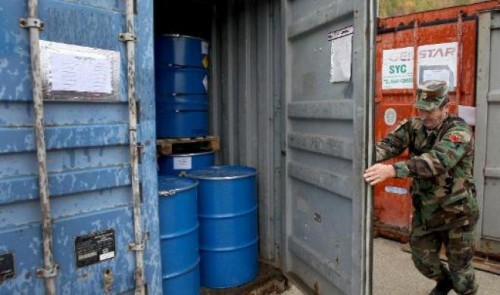 A U.S. cargo vessel equipped with special gear could be neutralizing some of Syria’s most dangerous chemical weapons at sea come January.
A U.S. cargo vessel equipped with special gear could be neutralizing some of Syria’s most dangerous chemical weapons at sea come January.
Once started, the process of neutralizing 500 tons of the chemical components used to make mustard gas and sarin gas could be completed within 45 to 90 days, Pentagon officials said today.
No final decisions have been made yet by the Organization for the Prohibition of Chemical Weapons (OPCW), but it appears increasingly likely that the agency will accept an offer from the United States to destroy the dangerous chemicals at sea.
The reserve merchant vessel MV Cape Ray, currently in Norfolk, Va., is in the process of being equipped with two Field Deployable Hydrolysis Systems, Pentagon officials said in a press briefing. These systems add water and bleach to dangerous chemicals, converting them into an inert liquid byproduct.
Though this process has never been carried out at sea, the officials said hydrolysis is “a proven technology” that will result in “a very low risk operation.”
About 100 personnel will be aboard the ship, 60 of them Defense Department civilians working with the hydrolysis systems, officials said. The rest will include security contractors and OPCW inspectors to verify that the chemicals are being neutralized.
The Cape Ray will undergo sea trials in a few weeks so the hydrolysis systems can undergo operational testing, officials said, with the expectation that it will be ready to sail in January. However, there are still gaps in the OPCW’s plans for where the neutralization of the Syrian chemicals will actually take place.
The OPCW’s timeline calls for the 500 metric tons of “priority one” chemicals to be removed from Syria by Dec. 31. An additional 800 metric tons of less dangerous chemical precursors will be destroyed by one of 35 companies that have bid for the contract, officials said.
The “priority one” chemicals will be taken to the Syrian port of Latakia for loading onto about 150 shipping containers to be placed onto a ship from an as-yet undetermined country, officials said.
It remains unclear where the Cape Ray would pick up the containers as the OPCW has yet to find a host country willing to allow one of its ports to be used for the transfer of the chemicals.
Once a port is chosen, a transfer of the chemicals onto the Cape Ray could be completed within 48 hours, officials estimated. The vessel would then depart for an undetermined off-shore location, where the hydrolysis could begin.
The “effluent” by-product will not be dumped into the ocean, but would be stored aboard the ship until a commercial company is selected to dispose of the by-product either through incineration or some other means, officials said.
Source: ABC News
TEPCO Drops Bombshell About Sea Releases; 8 Billion Bq Per Day
TEPCO made the startling admission today at a press conference that the plant is leaking 8 billion bequerels per day. (8 gigabequerels)
5 billion bq of strontium 90
2 billion bq of cesium 137
1 billion bq of tritium * (later corrected to 150)
This is the ongoing daily release to the Pacific. These release numbers are also within the realm of what some oceanographers have been warning about since last year, that there was an ongoing and considerable leak to the sea. According to journalist Ryuichi Kino TEPCO said this may be due to failings of some sort within the “glass” wall at the sea front. This is an underground wall made in the soil by injecting a solidifying agent to block water flow.
This daily release would add up to 11,680,000,000,000 = 11 terabequerels over 4 years time in addition to the initial sea releases during the meltdowns.
Source: http://www.fukuleaks.org/web/?p=13700
Hamas Tunnels Used To Target Israel’s Kindergartens
By Mordechai Ben-Menachem
Multiple media outlets report that Hamas’s offensive tunnel network – now known to have been composed of over forty attack tunnels dug underneath Israel’s border with the Hamas-controlled Gaza Strip – was set to be activated during the Jewish High Holidays (September 24th) as a mass terror attack.
The attack was meant to generate as many as ten thousand casualties, men, women and particularly children and hundreds of captives. Explosives were particularly placed underneath kindergartens to make certain that these “institutions” would be the first struck, even before any thing else.
The IDF recently published the below map showing that tunnels were created in pairs, to empty out on both sides of nearby communities. The known cost of the infrastructure – each tunnel costs upward of some $1 million – clearly shows that Hamas was planning a coordinated mega-attack. It must be understood that use of even one tunnel would inevitably trigger Israeli retaliation against the entire network.
A map of a small portion of the tunnels meant to be used 9 weeks from now.
Revelations regarding the planned tunnel attack magnitude played a decisive role in the Israeli government’s rejection of a ceasefire proposed late Friday by Secretary of State John Kerry.
Unbelievably, Kerry actually proposed in his latest “cease-fire proposal” – none of which have been honored by Hamas so far – that Israel refrains from degrading remaining attack tunnels. This mind-boggling concept would necessarily be rejected by any sane government, of any country.
Israeli security sources, citing information acquired in interrogations of captured brigands, described a scenario under which hundreds of heavily armed Hamas fighters would have spilled out into Israel in the dead of night and within 10 minutes been positioned to infiltrate essentially all Israeli communities surrounding the Gaza Strip. Waiting then in hiding until schools and kindergartens were occupied, the terrorists would then attempt to kill the children first, and then kill and kidnap as many Israelis as possible. The plot was set to take place during Jewish New Year, on September 24.
“It’s like the Underground, the Metro or the Subway,” Israeli military spokesman Lt. Col. Peter Lerner said. “These tunnels are all connected. I would describe it as Lower Gaza.”
Israeli Economy Minister Naftali Bennett said, “A whole city of terror tunnels has been found. Without the ground operation, we would have woken up one day to an Israeli 9/11.”
Except, the actual objective was to be five times 9/11.
This picture shows clearly the width of one of the tunnels, sufficient for wheeled vehicles to transverse it. Hamas did not build a “subway” system for Gaza residents. They built an infrastructure for one purpose, and one only, an industry of death.
Israeli military officials reported that the tunnels are stocked with tranquilizers, handcuffs, syringes, ropes and other materials used for subduing abductees, civilians and soldiers. The tunnels also had fantastic quantities of explosives and additional military materiel meant to be used in the up-coming mega attack. Much of these explosives had already been placed underneath Israeli kindergartens. Some of these tunnels were as deep as 30 meters underground.
Fantastic quantities of explosives were stored in every tunnel, meant to be used in a mega-attack on civilian communities and infrastructure.
Sources say the Gaza Strip war, Operation Protective Edge, could serve as a prelude for a more extensive underground war with the Iranian-sponsored Hezbollah. Perhaps, not ‘just’ in the Middle East.
The tunnels inside Gaza and under the Israeli border are not a secret project Hamas ran under the noses of Israel and the Palestinian public. Everyone inGaza, knew that beneath Gaza, the City and all of its environs, a network of tunnels was being dug over the past five years, with an investment of tens of millions of dollars. Yet no one in Israel, public or military, was prepared for the scope of the tunnels – the danger that became clear in the past week or two.
Senior Hamas operatives show off their offensive tunnels to their spouses. Unbelievably, this is actually a picture of a Marriage taking place in the ‘place of death’.
In order to create this monstrosity, Hamas needed significant professional help; and this help had to have come from a large organization or state entity. This is not just the monetary aid it received from Qatar, America’s ally. This is professional guidance for the performance of such an underground feat. Perhaps Hamas could have used experts from the tunnels dug at Rafah under the Gaza-Egypt border, but those were significantly simpler, and did not demand any extraordinary investment or effort.
A Hamas operative climbing upward in a pier of one of the major tunnels. Notice the work on the sides of the tunnel.
Who supplied these quantities of material? Who planned what would be needed? How did Hamas acquire thousands of ampoules of tranquilizer, syringes and other, additional drugs to be used? These are far beyond the quantities and variety of what is needed by any civilian medical service.
How was all this brought in to the Gaza Strip? The logistics of this planned attack are the work of a well-organised military, not that of a militia or club. This was no amateur plan.
Observers note that attack scenarios lined up with recently revealed data about the sophistication, scope and nature of the offensive tunnel network. As previously reported here, this sophistication and know-how is being copied right now by Mexico-based Hezbollah agents along the Southern US border. Tunnels in Southern Lebanon, as in South US, are significantly more difficult to detect than those in the sandy terrain of the Gaza Strip.
“Hamas planned these tunnels for years, and planned to use them to kidnap soldiers,” Israeli military spokesman Brig. Gen. Mordechai Almoz said. “[Now] they see the tunnels collapsing one after the other.” For the last two years, the Israeli army has sought to develop skills and equipment to fight in enemy tunnels and bunkers. Hamas and Islamic Jihad have used tunnels to operate command and control, to infiltrate Israel and abduct soldiers, to fire rockets and to conceal fighters amid invasion of the Gaza Strip.
Typhoon Neoguri nearing Fukushima
Tweet from astronaut Reid Wiseman aboard the International Space Station: “Typhoon Neoguri nearing Japan. Takes up our entire view. Wow.”
If the cooling pools at the Fukushima Daiichi are knocked down it will be an extinction level event.


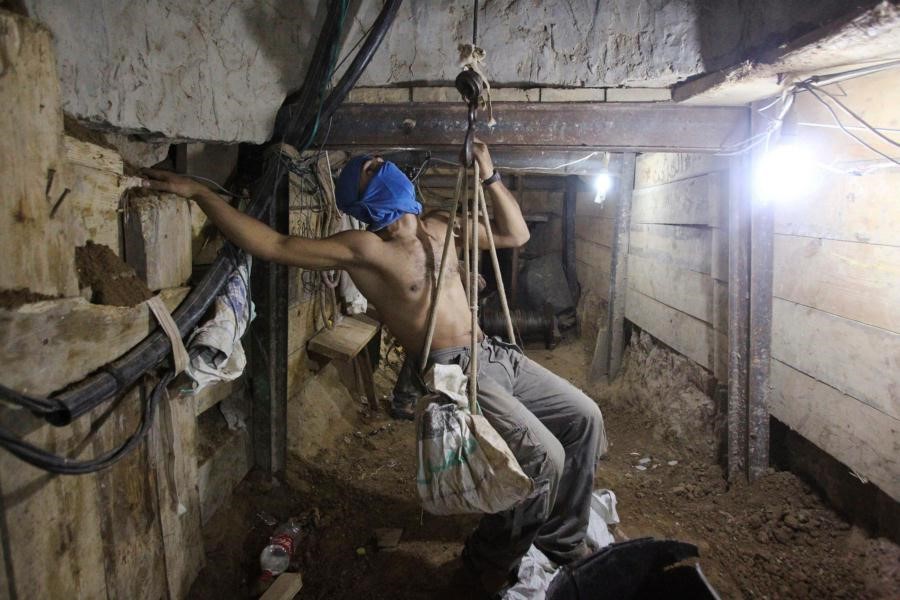

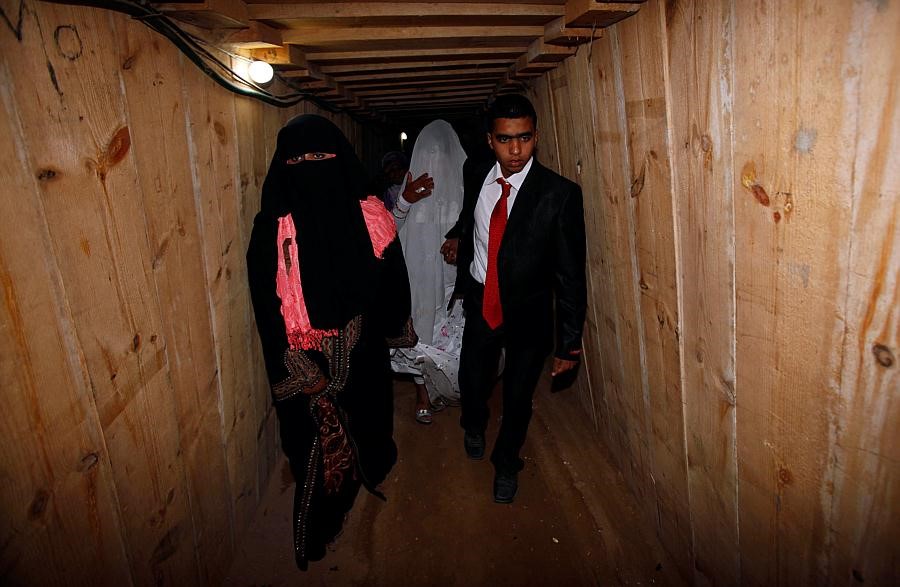
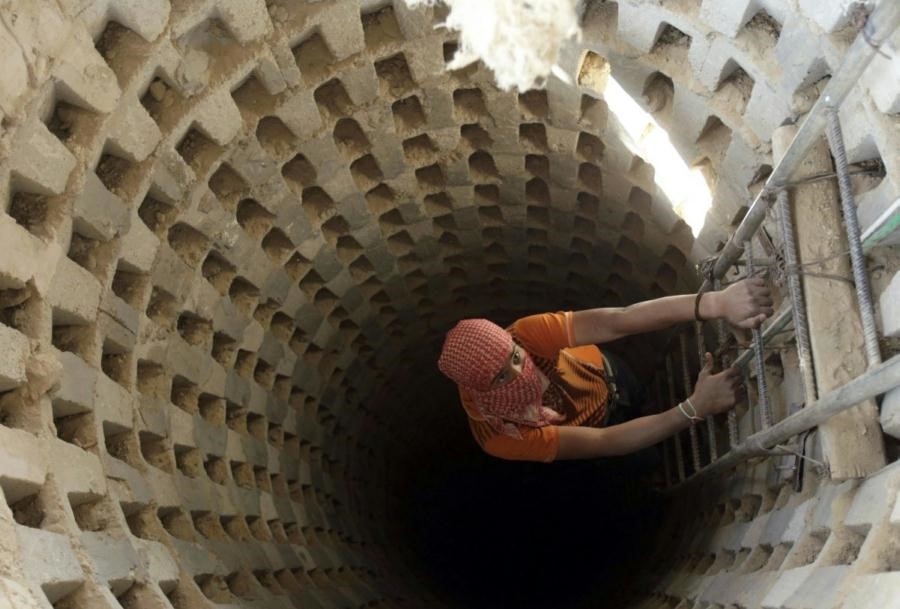

 Enhancement for Bodies and Minds
Enhancement for Bodies and Minds LifeLink
LifeLink Reinventing the Fountain of Youth
Reinventing the Fountain of Youth When You're Not Looking For The Exit
When You're Not Looking For The Exit